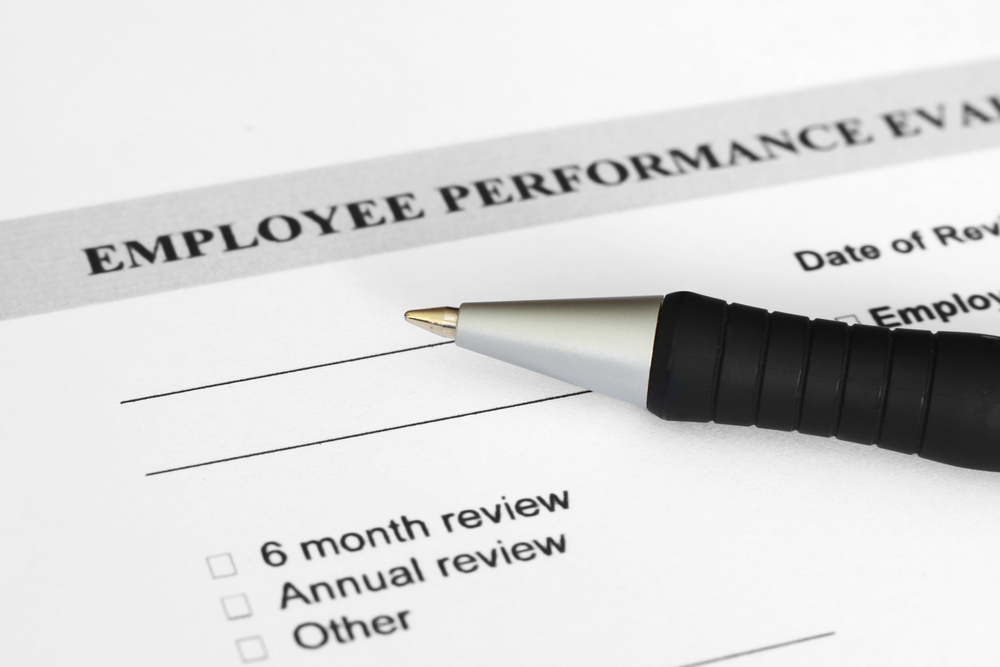The real Super Bowl winner? Insurance companies
Super Bowl LIX is almost upon us, bringing with it a host of questions. Who’s gonna win? What brand will have the best commercial and who will star in it? Also, why are ticket sales plummeting? But there are a lot of questions most of us aren’t thinking about. Questions like, What if the game gets canceled? How will New Orleans and the NFL protect the city and venue from threats? What if an unforeseen event injures players, fans, workers, or worse . . . Taylor Swift? Most would rather not consider such horrors. I don’t think anyone wants to live in a world where Kendrick Lamar is a no-show for halftime. But one group focuses exclusively on questions like these, sometimes as early as two years before the big game: insurance companies. Because football’s biggest stage makes the Super Bowl one of the world’s riskiest events. The business of insuring the Super Bowl is as expensive as it is secretive. Many details (premiums, coverage, companies involved) are not public. So we tracked down Martin Ridgers, owner of MKR Specialty Insurance Brokerage. Ridgers has helped insure 10 Super Bowls, as well as the World Cup, the Olympics, and even presidential inaugurations. He provided some insight into what it takes to insure the Super Bowl. Super liability “It’s almost like setting up a small city when you execute an event of this magnitude,” Ridgers says. Which is why, he says, “It’s not really the NFL that’s setting up the Super Bowl. It’s the city, which creates its own committee and its own organization.” For this reason, since so much of the hoopla surrounding the Super Bowl happens off the field (and even outside the venue), the NFL strategically shifts most liability to the host city’s committee, which becomes responsible for everything from accidents at NFL-sponsored events to property damage and worker injuries. Traffic incidents, temporary structures, emergency-response delays, protecting fans (ranging in varying degrees of intoxication)—the list of risks is exhaustive. And it’s not just game day that needs to be insured. It’s the entire week of Super Bowl festivities. And with potential payouts in the $100 million-plus range, a select few insurance providers are even willing and able to cover such costs. “There’s probably less than five insurance companies in the United States or even worldwide that can deal with a Super Bowl,” Ridgers says. “So it’s not like they’re buying regular car insurance where they can go out to 20 insurance companies and get a quote.” The biggest risk It’s difficult to imagine Super Bowl LIX being canceled. But it’s not out of the question. In 2011, an ice storm paralyzed Dallas for several days and threatened Super Bowl XLV at JerryWorld. In 2014, Super Bowl XLVIII in New Jersey narrowly escaped a snowstorm, which hit less than 12 hours after the game. So just about every party involved—the city committee, the NFL, the television network airing the game, cleaning companies contracted for the event, local hotels—buy cancellation insurance. This makes cancellation the number-one risk on Super Bowl Sunday. The closest the Super Bowl has come to getting canceled was in 2013. During Super Bowl XLVII at the New Orleans Superdome, the site of this year’s game, the power went out during the third quarter. After 34 minutes, it came back on and the game continued. Had power not been restored and the game postponed as a result, an insurance policy would have likely been triggered to cover the costs of extra lodging, staffing, setup, and much more, according to Ridgers. “It’s unlikely that there was a claim in that instance because the power came back on,” he says. “But it opened the door for a variety of claims had that not been resolved.” Media liability is also a key consideration. These policies protect the network airing the game from broadcast interruptions (like power outages), sound issues, and in some cases FCC violations—you know, from unforeseen issues like wardrobe malfunctions. Insuring the halftime show Perhaps the biggest controversy in Super Bowl history—halftime or otherwise—came in 2004 at Super Bowl XXXVIII, when Justin Timberlake pulled off part of Janet Jackson’s costume during their performance, exposing her breast. This became known as “the wardrobe malfunction” and led to CBS facing $550,000 in FCC fines. The fines were later thrown out, but the incident shined a light on a crucial aspect of event insurance. “A lot of times, fines are not insurable,” Ridgers says. “I’m not saying that they can’t be insurable, I’m saying they’re not necessarily insurable. Because [being fined] means you are guilty of a violation of something you know you shouldn’t have done in the first place.” The cost of defending fines, however, is insurable, Ridgers says—through if the accused party is found guilty, they may be required to pay the insurance company back. Beyond wardrobe malfunctions Indoor pyrotechnics, crews assembl

Super Bowl LIX is almost upon us, bringing with it a host of questions. Who’s gonna win? What brand will have the best commercial and who will star in it? Also, why are ticket sales plummeting?
But there are a lot of questions most of us aren’t thinking about. Questions like, What if the game gets canceled? How will New Orleans and the NFL protect the city and venue from threats? What if an unforeseen event injures players, fans, workers, or worse . . . Taylor Swift?
Most would rather not consider such horrors. I don’t think anyone wants to live in a world where Kendrick Lamar is a no-show for halftime.
But one group focuses exclusively on questions like these, sometimes as early as two years before the big game: insurance companies. Because football’s biggest stage makes the Super Bowl one of the world’s riskiest events.
The business of insuring the Super Bowl is as expensive as it is secretive. Many details (premiums, coverage, companies involved) are not public. So we tracked down Martin Ridgers, owner of MKR Specialty Insurance Brokerage. Ridgers has helped insure 10 Super Bowls, as well as the World Cup, the Olympics, and even presidential inaugurations.
He provided some insight into what it takes to insure the Super Bowl.
Super liability
“It’s almost like setting up a small city when you execute an event of this magnitude,” Ridgers says. Which is why, he says, “It’s not really the NFL that’s setting up the Super Bowl. It’s the city, which creates its own committee and its own organization.”
For this reason, since so much of the hoopla surrounding the Super Bowl happens off the field (and even outside the venue), the NFL strategically shifts most liability to the host city’s committee, which becomes responsible for everything from accidents at NFL-sponsored events to property damage and worker injuries. Traffic incidents, temporary structures, emergency-response delays, protecting fans (ranging in varying degrees of intoxication)—the list of risks is exhaustive. And it’s not just game day that needs to be insured. It’s the entire week of Super Bowl festivities.
And with potential payouts in the $100 million-plus range, a select few insurance providers are even willing and able to cover such costs.
“There’s probably less than five insurance companies in the United States or even worldwide that can deal with a Super Bowl,” Ridgers says. “So it’s not like they’re buying regular car insurance where they can go out to 20 insurance companies and get a quote.”
The biggest risk
It’s difficult to imagine Super Bowl LIX being canceled. But it’s not out of the question. In 2011, an ice storm paralyzed Dallas for several days and threatened Super Bowl XLV at JerryWorld. In 2014, Super Bowl XLVIII in New Jersey narrowly escaped a snowstorm, which hit less than 12 hours after the game. So just about every party involved—the city committee, the NFL, the television network airing the game, cleaning companies contracted for the event, local hotels—buy cancellation insurance.
This makes cancellation the number-one risk on Super Bowl Sunday.
The closest the Super Bowl has come to getting canceled was in 2013. During Super Bowl XLVII at the New Orleans Superdome, the site of this year’s game, the power went out during the third quarter. After 34 minutes, it came back on and the game continued. Had power not been restored and the game postponed as a result, an insurance policy would have likely been triggered to cover the costs of extra lodging, staffing, setup, and much more, according to Ridgers.
“It’s unlikely that there was a claim in that instance because the power came back on,” he says. “But it opened the door for a variety of claims had that not been resolved.”
Media liability is also a key consideration. These policies protect the network airing the game from broadcast interruptions (like power outages), sound issues, and in some cases FCC violations—you know, from unforeseen issues like wardrobe malfunctions.
Insuring the halftime show
Perhaps the biggest controversy in Super Bowl history—halftime or otherwise—came in 2004 at Super Bowl XXXVIII, when Justin Timberlake pulled off part of Janet Jackson’s costume during their performance, exposing her breast. This became known as “the wardrobe malfunction” and led to CBS facing $550,000 in FCC fines.
The fines were later thrown out, but the incident shined a light on a crucial aspect of event insurance.
“A lot of times, fines are not insurable,” Ridgers says. “I’m not saying that they can’t be insurable, I’m saying they’re not necessarily insurable. Because [being fined] means you are guilty of a violation of something you know you shouldn’t have done in the first place.”
The cost of defending fines, however, is insurable, Ridgers says—through if the accused party is found guilty, they may be required to pay the insurance company back.
Beyond wardrobe malfunctions
Indoor pyrotechnics, crews assembling stages and platforms quickly and on the spot, artists performing on stage, backup dancers . . . with or without wardrobe malfunctions, executing a spectacle like the Super Bowl halftime show is a liability nightmare.
According to Ridgers, it’s not the NFL or the city or the venue that typically insures the halftime show.
It’s the artist.
“I’ve worked with people doing the halftime shows,” he says, “and most of the time they will set up a separate corporation or company just to do that show, then start attaching things to that. So if they bring in a secondary artist or somebody, they will become a part of that corporation or will be brought on as a subcontractor.”
Security, he says, is usually the venue’s responsibility. So the artist is responsible for insuring the show—the setups, the pyrotechnics, the dancers, the crew, and the varying liability that comes with it.
“The artist either hires a company that’s done it before or they have to create a company to protect what’s happening during the halftime show,” he says.
According to Ridgers, insuring the 12-to-15-minute halftime show alone can cost more than $100,000.
Protecting Taylor, hosting Trump
Taylor Swift won’t be the only A-list celebrity attending Super Bowl LIX. (And it won’t even be her first time.)
Strange as it may seem, Donald Trump will be the first sitting U.S. president to attend the Super Bowl in the game’s 58-year history.
“Just because we know publicly that Taylor Swift is going to be there doesn’t change anything,” Ridgers says. “There would be plenty of other artists and important people showing up. Now . . . the president? That can increase my exposure.”
This is where, Ridgers says, he needs more information than the Secret Service is typically willing to give. Where the president will be, for how long, and what he’ll be doing are all critical factors in calculating the risk associated with his attendance. As you can imagine, those details are often sparse.
“Let’s say they come out and say the president is going to take the stage in the middle of the field,” Ridgers says. “Now, it becomes a political rally rather than just a football event. That could change the premiums. It could change the terms and conditions. And it could change whether I insure the show or not.”
Defense wins championships
The burden of insuring Super Bowl LIX is as massive as the event itself and the liability that goes with it. Rather than a single policy, Super Bowl insurance operates as a complex portfolio starting with a base policy and layering on additional coverage.
While premiums and general coverage amounts are not publicly disclosed, we can use our imaginations. The city of Las Vegas spent $60 million to host last year’s Super Bowl. The New York/New Jersey Super Bowl Host Committee was responsible for Super Bowl XLVIII. Played at MetLife Stadium in New Jersey, it was the most expensive ever at $70 million.
Factor in the myriad of liabilities across the board, and the potential payout and the premiums stack up pretty quickly. “The [Super Bowl] itself can sometimes cost into the seven figures to insure,” Ridgers says, electing not to share any further details.
Essentially, when hosting an event like the Super Bowl, the opportunities for things to go wrong are almost infinite, so the event has to be insured as such.
When discussing the responsibility of putting on Super Bowl LIX, Ridgers compared it to that of owning a tiger. “There’s really not a lot of defense if I’ve got a tiger and the tiger bites your head off,” he says. “I can say, ‘My tiger’s been nice and kind for the last 10 years!’ It doesn’t matter. It’s considered a weapon immediately.”






















